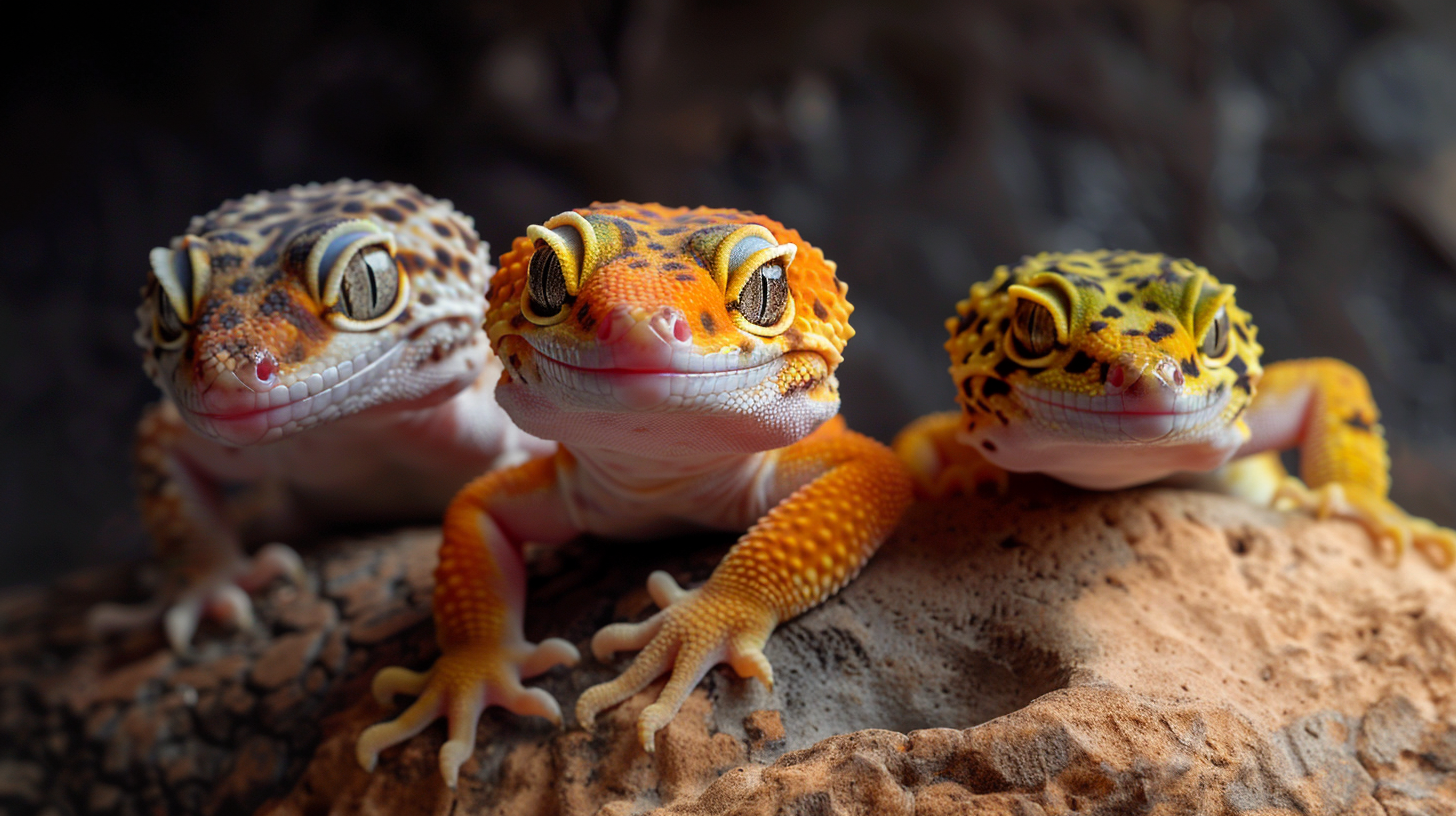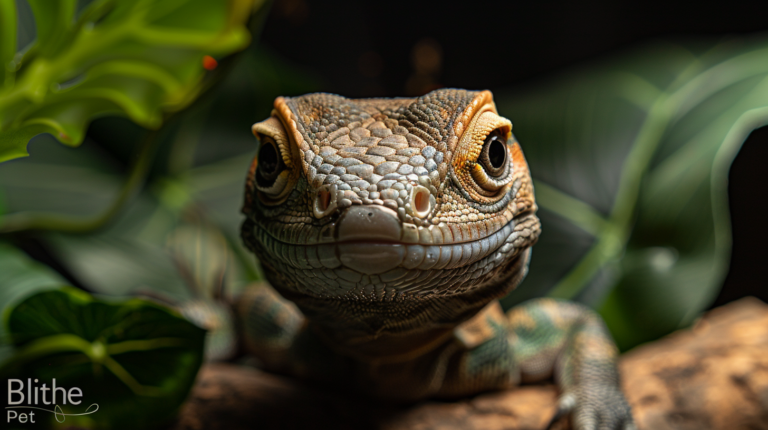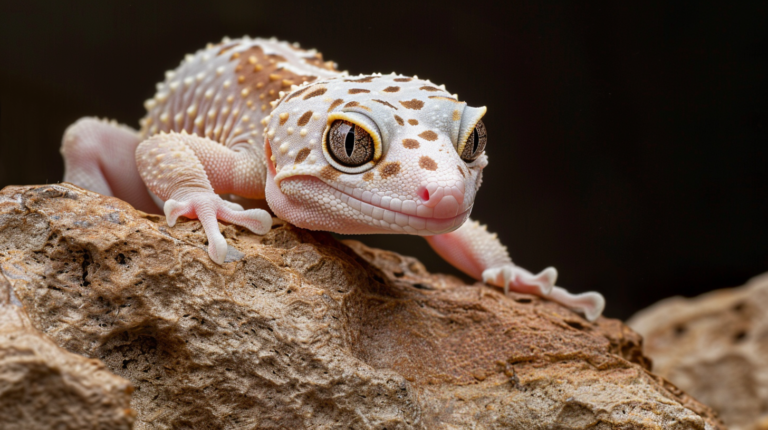Discover all leopard gecko morphs with our comprehensive guide. Learn about 10 stunning types, care tips, and breeding insights for these amazing reptiles.
Table of Contents
Leopard geckos have captivated reptile enthusiasts worldwide with their docile nature, ease of care, and remarkable genetic diversity. When exploring all leopard gecko morphs, you’ll discover a fascinating world of colors, patterns, and unique characteristics that make each gecko truly special. From the classic wild-type appearance to the most exotic designer morphs, these remarkable creatures offer endless possibilities for both novice and experienced reptile keepers.
The term “morph” in the reptile world refers to genetic variations that produce different visual appearances in leopard geckos. These variations can affect color, pattern, size, and even eye appearance, creating stunning combinations that have made leopard gecko breeding one of the most popular aspects of herpetology. Understanding all leopard gecko morphs is essential for anyone looking to add these beautiful creatures to their collection or simply appreciate their natural diversity.
What Are Leopard Gecko Morphs?
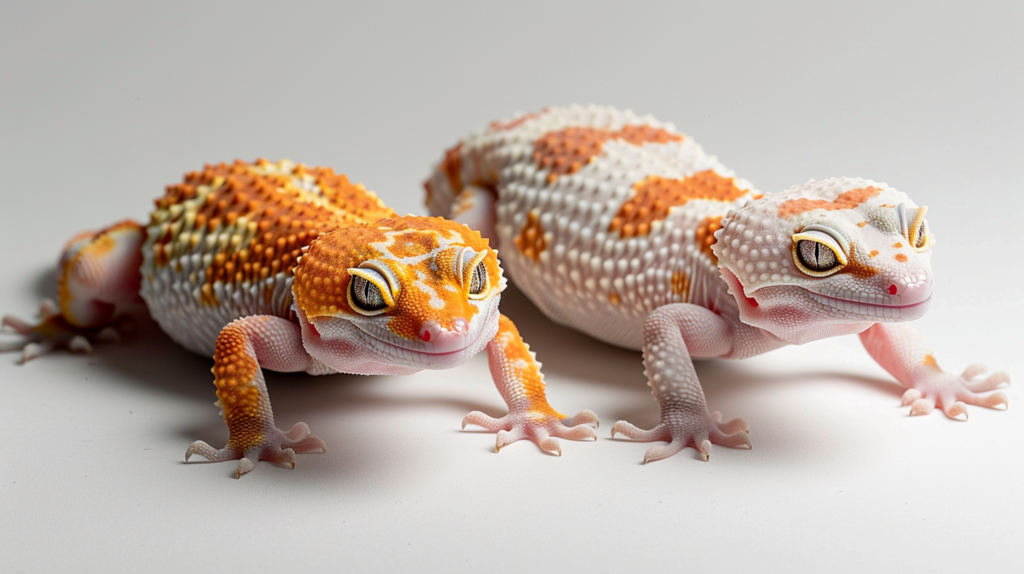
Leopard gecko morphs are genetic variations that result in different physical appearances from the standard wild-type leopard gecko. These morphs are created through selective breeding programs that isolate and combine specific genetic traits. The leopard gecko (Eublepharis macularius) has proven to be one of the most genetically diverse reptile species in captivity, with over 100 recognized morphs and countless combinations.
The genetic basis for these morphs involves various inheritance patterns, including:
- Recessive traits: Both parents must carry the gene for the offspring to display the morph
- Dominant traits: Only one parent needs to carry the gene
- Co-dominant traits: The trait is expressed when present but can blend with other traits
- Polygenic traits: Multiple genes influence the final appearance
According to reptile genetics research conducted by the International Gecko Society, the leopard gecko genome contains numerous genes responsible for pigmentation, pattern formation, and structural development. This genetic complexity allows for the incredible variety we see in all leopard gecko morphs today.
The 10 Most Stunning Leopard Gecko Morphs

1. Albino Morphs
Albino leopard geckos are among the most recognizable and sought-after morphs in the reptile community. There are three distinct albino strains: Tremper, Bell, and Rainwater, each named after their respective breeders who first developed these lines.
Tremper Albino: Features silver-colored eyes and tends to have more yellow and orange coloration. This was the first albino strain discovered in leopard geckos and remains highly popular among collectors.
Bell Albino: Characterized by pink or red eyes and often displays more white and pink tones in their coloration. Bell albinos are known for their striking contrast and clean appearance.
Rainwater Albino: Also called Las Vegas albinos, these geckos have pink eyes and typically show more lavender and pink hues in their patterns.
2. Leucistic Morphs
Leucistic leopard geckos lack melanin (black pigment) but retain other color pigments, creating stunning yellow, orange, and white appearances. The most famous leucistic morph is the “Blizzard,” which appears almost completely white with minimal pattern.
These morphs are particularly striking because they maintain their bright colors while eliminating the dark spots and bands typical of normal leopard geckos. Leucistic morphs often command high prices due to their rarity and visual impact.
3. Melanistic Morphs
On the opposite end of the spectrum, melanistic morphs contain increased amounts of dark pigmentation. The “Black Night” morph is a prime example, featuring deep black coloration that covers most of the gecko’s body. These morphs are extremely rare and highly valued by collectors.
4. Tangerine Morphs
Tangerine leopard geckos are selectively bred for intense orange coloration. The breeding goal is to achieve at least 30% orange coverage on the body, with some exceptional specimens showing 60% or more orange coloration.
Super Tangerine: The most intense form of tangerine morphs, featuring vibrant orange that covers significant portions of the gecko’s body.
5. Enigma Syndrome Morphs
The Enigma morph is both beautiful and controversial within the leopard gecko community. These geckos display random white and yellow spotting with reduced pattern regularity. However, the gene responsible for this appearance is linked to neurological issues known as “Enigma Syndrome.”
Symptoms can include:
- Circling behavior
- Head tilting
- Balance problems
- Star-gazing (looking upward continuously)
Responsible breeders carefully monitor Enigma lines and often outcross to reduce the severity of neurological symptoms.
6. Eclipse Morphs
Eclipse morphs are characterized by their solid-colored eyes, which can range from solid black to solid red. The eye appearance is the defining characteristic, though these morphs often display reduced pattern and increased solid coloration on the body.
7. Patternless Morphs
As the name suggests, patternless morphs lack the typical leopard gecko spots and bands. Instead, they display solid or gradient coloration across their bodies. Popular patternless morphs include:
- Murphy’s Patternless: One of the first patternless morphs developed
- Blizzard: A leucistic patternless morph
- Banana Blizzard: A yellow patternless variation
8. Jungle Morphs
Jungle morphs feature irregular, broken patterns instead of the typical spots. The pattern appears more chaotic and “jungle-like,” hence the name. These morphs often display beautiful color combinations with their unique patterning.
9. Stripe Morphs
Stripe morphs display a continuous stripe or band running down their back instead of individual spots. Variations include:
- Reverse Stripe: A light stripe on a dark background
- Bold Stripe: A prominent, well-defined stripe
- Broken Stripe: A stripe with gaps or interruptions
10. Designer Combinations
Modern breeding programs often combine multiple morph traits to create designer geckos. Popular combinations include:
- Blazing Blizzard: Blizzard + Tremper Albino
- Diablo Blanco: Tremper Albino + Eclipse + Blizzard
- Raptor: Red-eye Albino Patternless Tremper Orange
Understanding Leopard Gecko Genetics
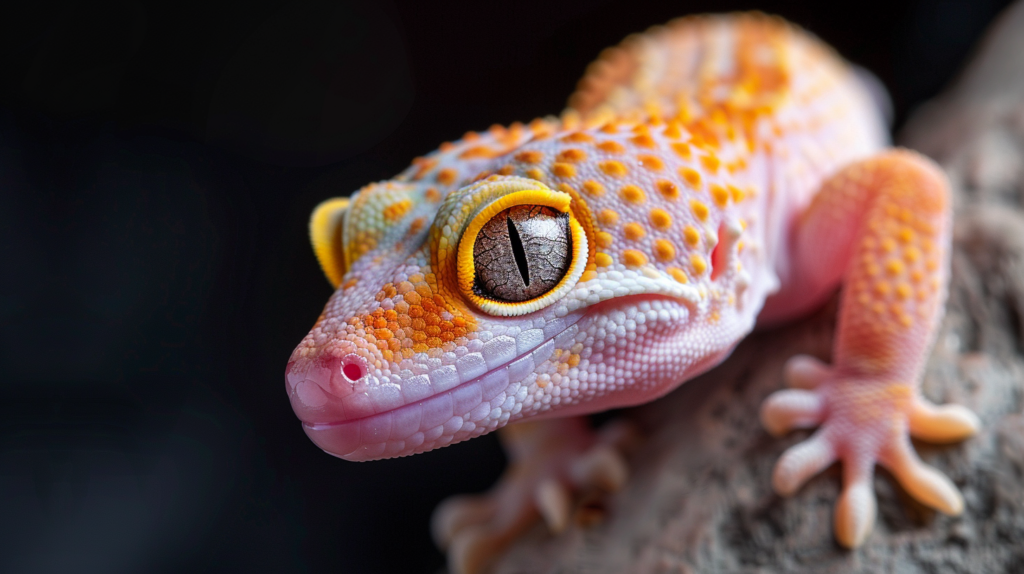
Breeding all leopard gecko morphs requires a solid understanding of reptile genetics. The inheritance patterns determine how traits are passed from parents to offspring, and understanding these patterns is crucial for successful breeding programs.
Basic Inheritance Patterns
Recessive Morphs: These require both parents to carry the gene for the trait to appear in offspring. Examples include all three albino strains and most patternless morphs. When breeding two heterozygous (carrier) geckos, approximately 25% of offspring will display the recessive trait.
Dominant Morphs: Only one parent needs to carry the gene for offspring to potentially display the trait. The Enigma morph follows dominant inheritance, meaning breeding an Enigma to a normal gecko can produce Enigma offspring.
Co-dominant Morphs: These traits are expressed when present but can blend or combine with other traits. Many color-enhancing morphs like Tangerine follow co-dominant patterns.
Line Breeding and Outcrossing
Successful morph development often involves:
- Line breeding: Breeding related geckos to concentrate desired traits
- Outcrossing: Introducing unrelated bloodlines to maintain genetic diversity
- Test breeding: Breeding suspected carriers to confirm genetic makeup
According to data from the Leopard Gecko Database, maintained by leading breeders, successful morph development can take 3-5 generations to establish stable traits, with some complex morphs requiring even longer development periods.
Care Considerations for Different Morphs
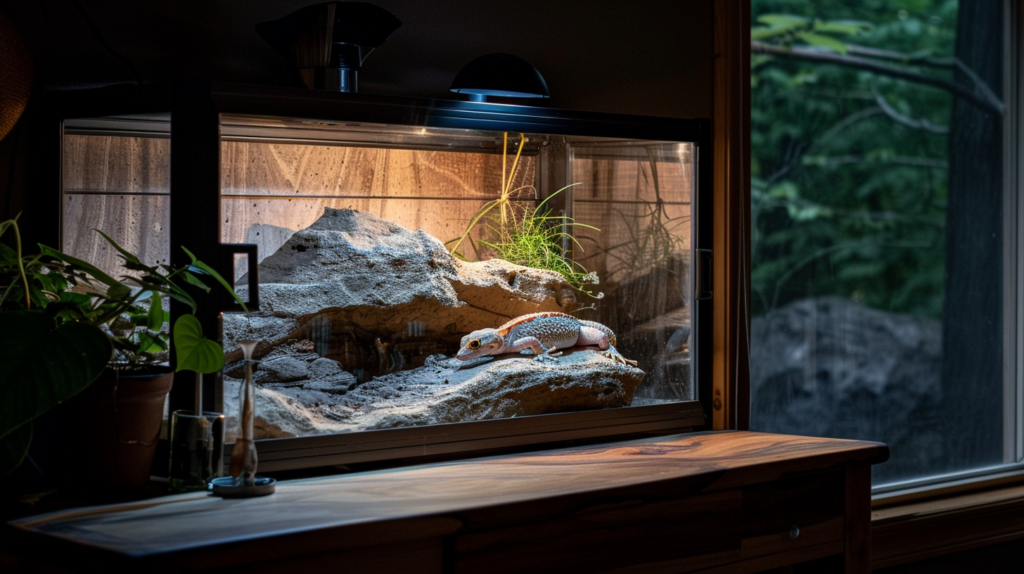
While all leopard geckos share basic care requirements, certain morphs have specific needs that owners should understand when caring for all leopard gecko morphs.
Albino Morph Care
Albino leopard geckos are more sensitive to bright lighting due to their lack of protective melanin. Considerations include:
- Reduced lighting: Use lower-intensity lighting or provide more hiding spots
- UV protection: Avoid excessive UVB exposure
- Temperature monitoring: Some albinos may be more sensitive to temperature extremes
Enigma Morph Care
Geckos with Enigma Syndrome require specialized care:
- Feeding assistance: Some may need help finding food
- Substrate considerations: Use smooth substrates to prevent injury during episodes
- Stress reduction: Minimize handling and environmental changes
- Veterinary monitoring: Regular check-ups to monitor neurological symptoms
Eye Morphs (Eclipse, Snake Eyes)
Geckos with eye morphs may have vision limitations:
- Food placement: Offer food in consistent locations
- Familiar environment: Avoid frequent enclosure changes
- Gentle handling: These geckos may be more easily startled
Market Value and Investment Potential

The market for all leopard gecko morphs varies dramatically based on rarity, genetic complexity, and current trends. Understanding market values helps both buyers and breeders make informed decisions.
Price Ranges by Category
Common Morphs ($50-$200):
- Normal/Wild-type
- Basic albinos
- Simple tangerines
Intermediate Morphs ($200-$800):
- Higher-grade tangerines
- Basic designer combos
- Common patternless morphs
High-End Morphs ($800-$5,000+):
- Complex designer combinations
- Rare color variations
- Proven breeding specimens
Ultra-Rare Morphs ($5,000+):
- Newly developed morphs
- Exceptional quality specimens
- Breeding program founders
According to market analysis from Reptile Price Guides, the leopard gecko morph market has shown steady growth, with certain morphs appreciating significantly in value over the past decade. However, prices can fluctuate based on breeding success and market saturation.
Investment Considerations
Factors affecting long-term value:
- Breeding potential: Proven breeders command higher prices
- Genetic stability: Well-established morphs maintain value better
- Market trends: Popular combinations can see rapid price increases
- Health considerations: Morphs with health issues may decline in value
Breeding Ethics and Responsible Practices
The breeding of all leopard gecko morphs comes with ethical responsibilities that every breeder should consider. The leopard gecko community has developed guidelines to promote healthy breeding practices and animal welfare.
Ethical Breeding Guidelines
Health First: Prioritize the health and well-being of breeding animals over profit or appearance. This includes:
- Regular veterinary care for breeding stock
- Genetic testing when available
- Avoiding breeding animals with known health issues
- Maintaining detailed health records
Genetic Diversity: Prevent inbreeding depression by:
- Maintaining diverse bloodlines
- Outcrossing when necessary
- Avoiding excessive line breeding
- Sharing genetic information with other breeders
Honest Representation: Accurately represent animals being sold by:
- Providing complete genetic information
- Disclosing any health issues or special needs
- Using accurate photos and descriptions
- Offering health guarantees when appropriate
The Enigma Debate
The Enigma morph represents one of the most significant ethical discussions in leopard gecko breeding. While these geckos are undeniably beautiful, the associated neurological issues raise important questions about breeding practices.
Responsible Enigma breeding involves:
- Full disclosure: Buyers must understand potential health issues
- Selective breeding: Working to reduce symptom severity
- Limited breeding: Not overproducing affected animals
- Research support: Contributing to understanding of the condition
Housing Multiple Morphs
Many enthusiasts enjoy keeping multiple morphs to appreciate the diversity of all leopard gecko morphs. However, housing multiple geckos requires careful planning and consideration.
Cohabitation Considerations
Size Requirements: Each adult gecko needs adequate space:
- Minimum 20 gallons for one adult
- Additional 10 gallons for each additional gecko
- Larger enclosures reduce territorial disputes
Gender Dynamics:
- Multiple males should never be housed together
- Females can often cohabitate successfully
- Male-female pairs may breed continuously without intervention
Morph Compatibility: All morphs can be housed together from a physical standpoint, but consider:
- Special needs morphs may require different care
- Feeding competition between geckos
- Different activity levels between morphs
Quarantine Protocols
New geckos should always be quarantined before introduction:
- 30-60 day quarantine period: Minimum quarantine duration
- Separate equipment: Use different tools and dishes
- Health monitoring: Watch for signs of illness or parasites
- Veterinary clearance: Consider health checks before introduction
Future of Leopard Gecko Morphs
The future of all leopard gecko morphs looks bright, with ongoing developments in breeding techniques and genetic understanding. Several trends are shaping the future of the hobby:
Emerging Technologies
Genetic Testing: Advanced genetic testing may soon allow breeders to:
- Identify carriers of recessive traits
- Predict morph outcomes more accurately
- Screen for health-related genes
- Develop new breeding strategies
Improved Husbandry: Better understanding of gecko biology leads to:
- Enhanced breeding success rates
- Healthier offspring
- Longer lifespans for breeding stock
- More consistent morph expression
New Morph Development
Breeders continue to develop new morphs through:
- Novel gene combinations: Combining existing morphs in new ways
- Wild-caught genetics: Introducing new bloodlines from wild populations
- Mutation breeding: Working with spontaneous genetic mutations
- International collaboration: Sharing genetics between breeders worldwide
According to industry experts, we can expect to see continued diversification in leopard gecko morphs, with emphasis on both visual appeal and genetic health.
Table: Morph Comparison Chart
| Morph Type | Inheritance | Price Range | Care Difficulty | Special Considerations |
| Normal | Wild-type | $30-80 | Easy | Standard care |
| Albino | Recessive | $100-400 | Easy-Moderate | Light sensitivity |
| Tangerine | Polygenic | $80-500 | Easy | None |
| Eclipse | Recessive | $150-600 | Moderate | Vision limitations |
| Enigma | Dominant | $200-800 | Difficult | Neurological issues |
| Blizzard | Recessive | $200-1000 | Easy-Moderate | None |
| Designer Combos | Variable | $300-5000+ | Variable | Depends on morphs |
For more expert pet care tips and product recommendations, visit BlithePet.com — your trusted source for pet wellness.
Frequently Asked Questions
What is the rarest leopard gecko morph?
The rarest leopard gecko morphs are typically newly developed designer combinations or morphs with extremely complex genetics. Currently, morphs like the “Black Pearl” and certain high-grade designer combinations can be considered among the rarest, with some specimens selling for over $10,000. Rarity often depends on the difficulty of reproduction and the number of breeders working with specific genetic lines.
How many leopard gecko morphs exist?
While there’s no exact count of all leopard gecko morphs, experts estimate over 100 distinct morphs and countless combinations exist today. The number continues to grow as breeders develop new genetic combinations and discover novel mutations. The International Gecko Society maintains records of recognized morphs, though new variations are regularly added to the list.
Are certain morphs harder to care for than others?
Yes, some morphs require special consideration. Albino morphs need reduced lighting, Enigma morphs may need assistance with feeding and navigation, and eclipse morphs might have vision limitations. However, most morphs can be successfully kept with standard leopard gecko care, making them suitable for beginners. Always research specific morph requirements before purchasing.
Do different morphs have different lifespans?
Most leopard gecko morphs have similar lifespans of 15-20 years with proper care. However, some morphs associated with health issues (like severe Enigma Syndrome) may have shortened lifespans. Well-bred, healthy morphs typically live just as long as normal leopard geckos, making longevity more dependent on care quality than morph type.
Can you breed different morphs together?
Yes, different morphs can be bred together, often creating offspring with combined traits or heterozygous (carrier) genetics. This is how many designer morphs are created. Understanding genetics is crucial for predicting outcomes, and some combinations may not express visually in the first generation but can produce spectacular results in subsequent generations.
How much should I expect to pay for my first morph gecko?
First-time morph buyers should expect to pay $100-500 for a quality specimen, depending on the morph chosen. Normal morphs and basic albinos are excellent starting points and cost less than complex designer morphs. Remember that the initial cost is just one factor – ongoing care, proper setup, and potential veterinary expenses should also be considered in your budget.
Conclusion
Understanding all leopard gecko morphs opens up a fascinating world of genetic diversity, stunning visual appeal, and rewarding breeding opportunities. From the classic beauty of albino morphs to the cutting-edge designer combinations being developed today, leopard geckos continue to captivate reptile enthusiasts worldwide with their incredible variety.
Whether you’re a first-time gecko owner drawn to the gentle nature and easy care of these remarkable reptiles, or an experienced breeder working to develop the next stunning morph combination, the world of leopard gecko genetics offers endless possibilities for learning and enjoyment. Remember that while the visual appeal of different morphs is undeniably attractive, the health and well-being of these animals should always be the top priority.
The future of leopard gecko morphs looks brighter than ever, with advancing genetic understanding, improved breeding techniques, and a passionate community of breeders and keepers working together to develop new varieties while maintaining the health and genetic diversity of these amazing creatures.
Have a similar experience with your leopard gecko morphs? Share it in the comments below!

